Quand les lycéens de l'ISJA rencontrent les lycéens de San Francisco... Retour sur une belle jou
- Mme Aurélie Ba - Professeur d'Histoire-Géographie

- 25 févr. 2018
- 5 min de lecture
Dans le cadre d’un projet d’échange interculturel, les élèves de l’Institution Sainte Jeanne d’Arc et de la French American International School (San Francisco, USA) ont eu l’occasion de se rencontrer et de visiter l’île de Gorée.
Le projet vise à permettre aux élèves d’établissements français de pays différents de communiquer par correspondances, d’échanger et de découvrir leurs cultures respectives, à travers le récit de leur quotidien, de leurs perspectives d’avenir, de leurs visions du monde de demain...
La rencontre s’est déroulée autour d’un lieu historique : l’ile de Gorée, connectant l’Histoire des 2 pays. Dans un premier temps, les élèves américains, qui étaient en projet solidaire à Mbour, ont été reçus par leurs correspondants au sein de l’Institution pour une visite de l’établissement et un repas chaleureux. Ensuite, ils ont visité l’île et partagé de riches échanges, comme en témoignent les récits suivants.
Les élèves souhaitent poursuivre le projet en organisant un séjour d’échanges à San Francisco l’année prochaine.

Accueil et visite de l'Institution :
En route pour l'Ile de Gorée :

Visite de l'Ile de Gorée et de la Maison des esclaves :

Un grand merci à :
Sylvie Remal, professeur de SVT au LFSF, ancienne professeur de l'ISJA Aurélie Bâ, professeur d'Histoire à l'ISJA Wafa Elouaari, professeur d'Anglais à l'ISJA
Khadidiatou Thiam, professeur d'Espagnol à l'ISJA
Blaise Diouf, conseiller principal d'éducation à l'ISJA
Scott Paton, professeur d'Histoire au LFSF
Madeleine Sow, conseillère principale d'éducation à l'ISJA
Justin Samy, professeur d'Histoire à l'ISJA Sophie Mann, chargée de communication à l'ISJA Et tout le personnel de service de l'Institution pour sa présence en ce dimanche 25 février 2018.
Merci à tous pour cette belle journée !
Le 27 février 2018 Bonjour à tous,
Voici le premier retour spontané des élèves. Il est très positif ! Un grand merci aux professeurs qui ont organisé et encadré cette journée ! Les élèves semblent ne pas vouloir en rester là et sont d'autant plus motivés pour poursuivre le projet, en visant un séjour d'immersion à San Francisco. Du côté américain, le retour est très positif aussi. Cette première rencontre a permis de casser de nombreux préjugés des deux côtés.
Très cordialement,
Aurélie Ba Professeur d'Histoire à l'Institution Sainte Jeanne d'Arc

Les messages des élèves :
Bonjour Mme Ba, on espère que vous allez bien.
On souhaitait vous remercier pour cette magnifique opportunité de rencontre avec les élèves de San Francisco.
La journée s’est très bien passée même si nous aurions aimé vous avoir avec nous.
Nous vous envoyons quelques photos.
Merci de tout coeur. La 1ère SB
Voici les extraits de textes écrits par les élèves américains qui ont été publiés sur leur site :
Today, we left M’bour to spend the day in Dakar. In Dakar, we met with some students from the Institution Sainte Jeanne d’Arc, a private international school much like our own. As we interacted with the students, I was amazed at how welcoming and similar to us they all were. I spent much of the day with a Moroccan-Senegalese girl, Zinabb. I found it quite easy to talk to her; we were able to ask each other meaningful questions, and never felt the conversation lag. I found it interesting to learn about her life in Dakar, and was surprised and in awe of how similar her school life was to mine.
Later, after lunch, we went together with the Senegalese students to visit the iconic Île-de-Gorée, a symbol of the tragic exportation of slaves. I was moved by the eerie beauty of the island, becoming increasingly aware of the lack of humanity that took place on this island surrounded by celestial water and embellished with breathtaking architecture. During our time on l’Île-de-Gorée, a guide regaled us with the history of the exportation of slaves. I was shocked at the conditions under which the slave trade took place. Inside the House of Slaves, that is situated right on the waterfront, woman, men, and children were crammed into tiny, dark rooms with slits for windows. They were chained to the walls, and only liberated once a day to relieve themselves. Obviously this was not enough; the hygiene amongst the slaves therefore suffered, and many fell ill. The sick slaves were promptly discarded; they were thrown in the ocean to be devoured by sharks without a second thought.
The combination of meeting the Senegalese students from Dakar and the visit to Île-de-Gorée was an incredibly valuable experience that demonstrated the hospitality and acceptance of the Senegalese people. Throughout our trip, I have been amazed by the sense of community shared by all the people that we have encountered; they all really seem to care about and support each other. On the walls of the House of Slaves, it is written, “Oui pour pardonner, non pour oublier,” which translates to “Yes for forgiveness, no to forgetting.” This message, along with the always-welcoming attitude of the Senegalese highlights the acceptance and openness of the people that we have met, but also the rich, unique culture and history of the Senegalese people that is such a crucial part of who they are. I am so grateful to this day (and this trip as a whole) for teaching me so much about the beauty and complexity of the world in which we live. Sunday Journal Briefing by Nayla Nehme
We had finally arrived on Gorée island after a 15 minute boat ride and it was absolutely beautiful. It’s a nice island, full of small buildings with pink walls and blue-green windows, under the bright burning sun. Although, this beauty was shadowed by the terror of slavery that occurred on the island, from the 16th to 19th centuries.
Our tour guide taught us as we walked through the island, specifying the importance of each building and each street name. Once we finally arrived to the House of Slaves and stood in front of the door where the slaves would be taken to America, I remember hearing the phrase: “The door of no return” and it instantly gave me the chills. To hear about the horrors of the slave trade that happened on this island baffled me completely. I learned about things I never even knew. For example, little slave girls in this House of Slaves would be forced to have sexual relations with their owners, which made me cringe. All these slaves were treated terribly and eventually caused a terrible epidemic. The slaves that fell ill would be thrown into the ocean and shot to death. There was also a huge hygiene issue because the slaves would be liberated to use the restroom just once a day, so their small cells full of 30 people would become a place of infections and poor hygiene. It shocks me that these owners could sleep happily in their rooms, just one floor above these people who were suffering. It is so hard to think about this; it almost seems unreal. But, it did happen and those slaves had to go through hell and back just to please those who thought they were better. Even though slavery may not be as significant a problem today, racism obviously still is. The privileged must use their words to fight against this oppression, because at the end of the day we are all equal.
Lycée français de San Francisco : https://www.lelycee.org/













































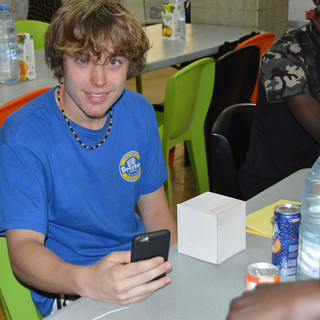

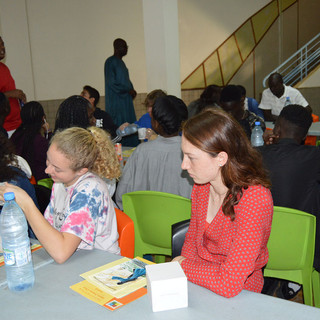





































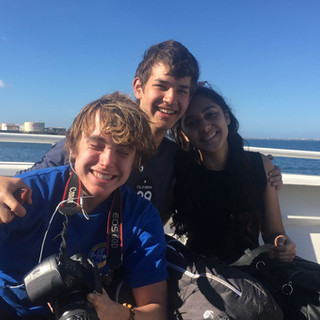











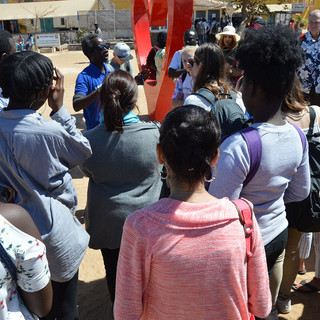















































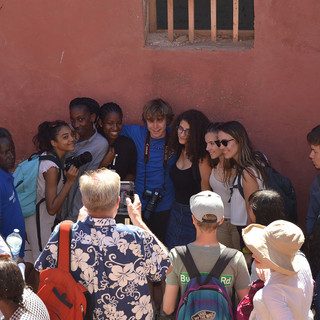













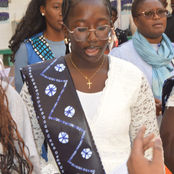




































Commentaires